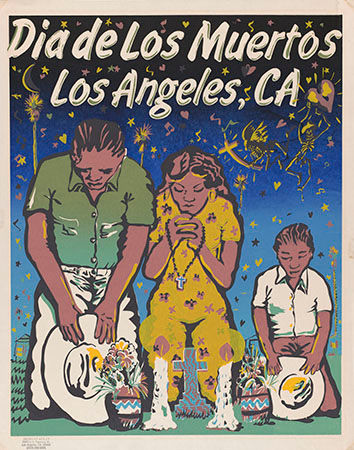What's the difference between English only and whites only? - Poster of the Week
- politicalgraphics
- Mar 7
- 2 min read
¿Qué Diferencia Hay entre Solo Ingles y Solo Blancos? / What's the Difference Between English Only and Whites Only?
Artist Unknown
Offset, Circa 1987
Los Angeles, CA
3584 / 1825
On March 1st, President Donald Trump signed an Executive Order designating English as the official language of the United States. This order voids a Clinton-era policy which required federal agencies to provide language assistance to people with limited English proficiency. Trump claimed that the order will "...promote unity, cultivate a shared American culture for all citizens, ensure consistency in government operations, and create a pathway to civic engagement." The reverse is more like it.
This order will target and unfairly exclude naturalized citizens who rely on essential language assistance when exercising their right to vote. On a larger scale, this Executive Order also has the potential to affect the existence of critical programs such as English as a Second Language, also known as ESL, in public schools across the country. The order also gives the green light to federally funded programs to cut multilingual services, thus limiting program access to English-speakers.
Although English is already the official language in 30 states, including California, the number of people in the US who speak a language other than English at home has tripled since 1980. There are between 350 and 450 languages spoken in the United States, the most common being Spanish, Chinese, and Tagalog.
CSPG's Poster of the Week from 1986 reflects historical precedent to the current administration. Inside the bold letters are photographs of signs designating colored and whites only public spaces of the Jim Crow era. In the 1980s, increased immigration intensified North American nationalism. While much of the antagonism was focused on Spanish speakers, other ethnic groups were also targeted. In 1986, California voters passed Proposition 63, which became a state constitutional amendment making English the official language in the state. The cruel irony is that at the same time the law was passed, the California ESL (English as a Second Language) programs suffered severe cutbacks, and hundreds of people who wished to learn English were turned away.
Several have called Trump’s move “un-American.” History tells us it’s very American. We cannot pretend this Executive Order was signed to promote unity of the nation but was signed to further fuel Trump's own racist and xenophobic rhetoric. This order does the opposite of what its alleged purpose is. The message is clear - Americans who are not rich, white and English-speaking - do not belong.
References:








Comments